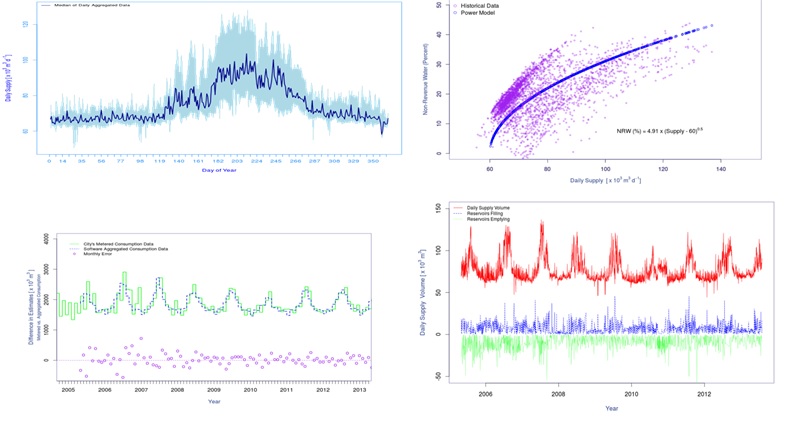Overview
Client: City of Regina
Location: Regina, Saskatchewan, Canada
Project: Assessment of Historical Water Use Trends and Long-Term Forecast of Water Demand in Regina (Based on Nine Years of Automated Meter Reading and Water Supply Data)
IDS was commissioned by the City of Regina to analyze water trends in the City over the past nine years using meter reading data collected by the City’s drive-by automated meter reading (AMR) system as well as storage, pumping, and treatment data collected by the City’s SCADA system. This historical information is invaluable in understanding the impact of such parameters as seasonality, population growth, conservation measures, and water rates on the patterns of water consumption and non-revenue water.

Challenge
The City of Regina’s water system provides water for residential, commercial, and industrial customers as well as water for irrigation, summer service, and fire protection. The system serves a population of approximately 207,000. Over the past decade, the City of Regina has invested heavily to implement state-of-the-art automated meter reading (AMR) and SCADA technologies, which enabled the collection of massive amounts of water consumption and supply data. Processing and analyzing this data could provide wealth of information on the intrinsic behavior of the system and to reliably forecast future water demand. This information will be invaluable to support decisions on system operations, capacity planning, and demand management. However, this analysis would require the use of specialized analytics algorithms and software tools that are not readily available in the market.
Solution
To undertake this project, IDS has developed a unique data analytics solution to implement specialized algorithms to process and analyze the massive amount of Regina’s water data over nine years study period (2005-2013). The solution was designed to provide detailed analysis of water consumption data across various service sectors based on AMR data, as well as water storage, supply, and treatment data. The solution also supported analysis of trends and relationships between water use, population change, non-revenue water, system capacity, per capita use, and climate conditions.
The solution was used to analyze daily, weekly, monthly, annual, and multi-year water consumption based on AMR data and to assess historical trends of water consumption for various service classes (residential, multi-residential, commercial, irrigation, and summer services). The solution was also used to analyze water production and storage data and trends of reservoirs volume change and supply from the treatment plant. Trends of average and peak daily demand, and average per capita demand were also analyzed. Weather data during the study period were also analyzed to examine possible correlation with water consumption trends. The solution was also used to analyze trends in non-revenue water over the study period and evaluate correlation with demand levels and time of the year. The analysis results will provide valuable insights into the intrinsic behavior of the system and forecasting of future water demand. The results will also help define feasible service level targets and support decisions on system operations, capacity planning, and demand management.
